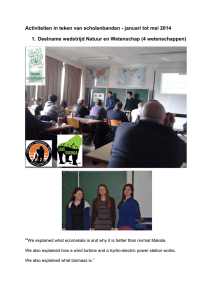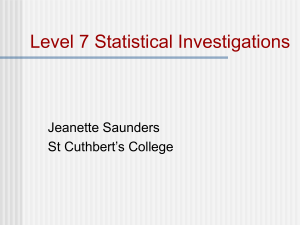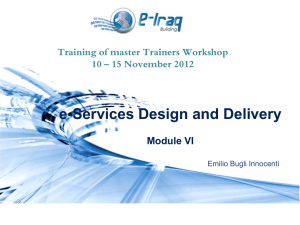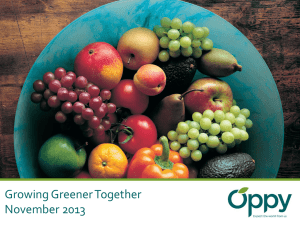794 kb - anzccart
advertisement
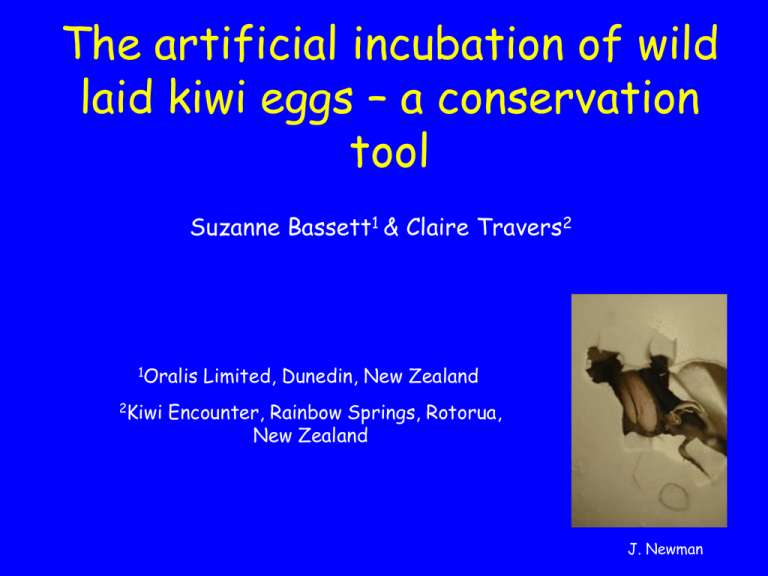
The artificial incubation of wild laid kiwi eggs – a conservation tool Suzanne Bassett1 & Claire Travers2 1Oralis 2Kiwi Limited, Dunedin, New Zealand Encounter, Rainbow Springs, Rotorua, New Zealand J. Newman Acknowledgements • Department of Conservation & all community trust kiwi projects • Kiwi Encounter, Rainbow Springs, Rotorua • Massey University & University of Otago • Dr Trevor Kelly, Vet Centre, Rotorua Talk outline • • • • • • • Kiwi biology Kiwi decline & threats Operation Nest Egg Incubation challenges Ethical considerations Kiwi welfare Summary Ratites M. Potter • • • • • • • Kiwi Cassowary Emu Ostrich Rhea Moa Elephant bird Taxonomy • North Island brown kiwi (Apteryx mantelli) • Southern tokoeka (Apteryx australis) R. Morris • Okarito brown kiwi (Apteryx rowi) • Haast tokoeka (Apteryx australis ‘’Haast’) • Great spotted kiwi (Apteryx haastii) • Little spotted kiwi (Apteryx owenii) R. Morris Kiwi abundance & distribution • North Island brown kiwi (25,000) • Great spotted kiwi (17,000) • Southern tokoeka (15,000) • Haast tokoeka (300) • Little spotted kiwi (1,500) Department of Conservation • Okarito brown kiwi (250) The kiwi egg & chick • Egg large relative to body size (20%) (~440 g) • 1 functional oviduct, 2 functional ovaries • 2 eggs/clutch, 2-3 clutches/yr (NIBK) 1 egg/1 clutch/yr (SI sp) • High fertility (NIBK) Low fertility (SI sp) • Male incubation, length ~85 d wild, 78 d art inc • Highly precocial chicks (~320 g hatch weight) Otorohanga Zoological Society Kiwi decline • All kiwi are endangered • Adult mortality ranges 5 – 16%/yr - Predators cause 28% mortality • 50% eggs failed to hatch –10% due to predators • Rate of decline 6%/yr (McLennan et al . 1996) Kiwi Encounter Juvenile kiwi mortality • Juvenile kiwi mortality 94% – Introduced mustelids kill 77% Forest & Bird • Main predator = STOATS (Mustela erminea) Tui De Roy • Predation declines as chicks grow Management responses • Habitat protection – Public lands – Department of Conservation – Private lands – Landcare Trust, QE2 Trust, Community programs G.L. Blackwell • Predator Control - Poisoning, trapping and exclusion fencing of mammalian predators • Direct management of Kiwi – Captive rearing of wild-laid eggs & chicks (Operation Nest Egg – ONE) Department of Conservation Operation Nest Egg Kiwi eggs & chicks removed from the wild Taken to a captive rearing institute for incubation, hatching & rearing Chicks raised until 800 g+ & released to wild Chicks released in predator free area O.N.E a short term measure to ‘buy time’ Management & animal welfare • Habitat protection – few ethical issues • Predator Control - On conservation estate DOC does not require AEC approval for “regular & routine” animal control under Section 5, sub-sect 3a, b, c of Animal Welfare Act 1999 • Direct management of Kiwi –Administered by DOC –ONE also considered “regular & routine” captive management under Animal Welfare Act 1999 Kiwi Encounter • 1995/96: (1 egg) 2007/08 (171 eggs) • Egg age 0 – 75 days (2005/06 median 38 days) • 910 eggs to end of 07/08, 667 eggs viable, 623 chicks released to date • Forced draft artificial incubation Kiwi Encounter • Focus on North Island brown kiwi Incubation challenges High hatch success but… • Cracked eggs • Embryo mortality • Malpositioned chicks assisted hatches S. Bassett & KE Egg results 2007/08 • 120/171 eggs incubated (70 % eggs viable) • 106/120 chicks hatched (88 % hatch success) • 1000th ONE chick S Bassett Waikato Times • New techniques: x-rays, advances in candling & incubation, chick rearing and release protocols T. Kelly • Improvements in O.N.E - hatch success (40 % to 90+ %) - chick survivorship pre-release 60 % to 95 % post-release 80+ % Kiwi Encounter General conclusions Kiwi Encounter & animal welfare • O.N.E – “Regular & routine” management under Animal Welfare Act 1999 – Ongoing research to improve animal welfare in ONE • Ways to improve hatching success and chick survival • Egg and chick transportation protocols • Disease management and quarantine protocols • Approved by DOC and the Kiwi Recovery Group Kiwi Encounter & animal welfare • Day to day husbandry – Hygiene, housing, feeding, health • “Yolk-sac” operations to remove impacted/infected yolk • Abandoned eggs or chicks – Development and refinement of best practice – Responsible to DOC & Australasian Regional Association of Zoological Parks and Aquaria (ARAZPA) Kiwi Encounter & broader kiwi welfare • Injured birds – Small numbers of injured kiwi treated by Kiwi Encounter • Vehicle collisions • Trap injuries • Dog attacks – wild dogs & ‘kiwi’ dog accidents – Poor public & vet. awareness of standards & responses to injury/harm Kiwi Encounter Kiwi Encounter & broader kiwi welfare • Concerns about impacts of O.N.E on kiwi welfare – Do captive reared kiwi have lower survival than wild chicks? • No difference in survival • Earlier breeding attempts – Is there evidence of stress or harm to captive kiwi • No imprinting • No evidence of prolonged stress Kiwi Encounter General conclusions – kiwi conservation • Increased public awareness of kiwi conservation • Change in perception of O.N.E • Increased kiwi numbers • Strategic use of O.N.E - pulsed application by year or by area e.g. stoat eruption S Bassett Summary • Kiwi continue to decline but… Captive rearing is making a huge difference • Urgently require effective stoat control … a long way off The next step … • Improve husbandry for other kiwi sp • O.N.E to recover populations near extinction – eg South Island species • Continue to follow & improve best practice for husbandry & welfare • Public education on kiwi welfare Kiwi Encounter Thank you
